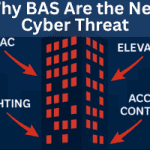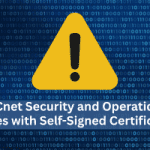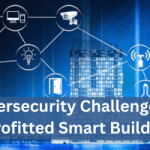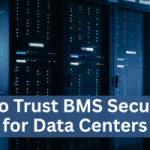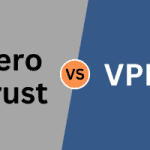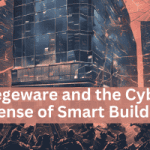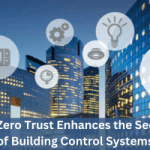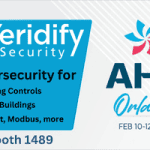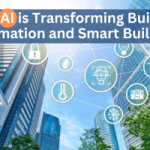Building Automation
Why Building Automation Systems Are the New Cybersecurity Target
Quick Summary Building Automation Systems (BAS) are increasingly targeted by cybercriminals because they manage critical building functions such as HVAC, lighting, elevators, and access controls. Once considered safe due to isolation, BAS are now internet-connected and often insecure by design, making them gateways to both operational disruption and corporate IT networks. As cyberattacks on smart…
Read MoreOvercoming Niagara Framework Cyber Vulnerabilities
Key Points Comprehensive Vulnerability Mitigation: DOME encrypts all device communications, enforces unique cryptographic identities, blocks unauthorized actions, and prevents lateral movement even on flat networks—addressing risks like unencrypted data, credential hijacking, privilege escalation, and insecure configurations. Zero Trust at the Endpoint: Every enrolled device must authenticate and follow strict, policy-based access rules, ensuring only explicitly…
Read MoreBACnet Security and Operational Issues with Self-Signed Certificates
Key Points Security Risks Without Trusted Validation: Self-signed certificates lack third-party verification and a root of trust, making BACnet/SC systems vulnerable to spoofing, impersonation, and man-in-the-middle (MitM) attacks. Operational Complexity and Inefficiency: Managing self-signed certificates is time-consuming and error-prone, requiring manual generation, distribution (e.g., via USB), and renewal—especially problematic in large-scale deployments. Downtime and Renewal…
Read MoreCybersecurity Challenges in Retrofitted Smart Buildings
Key Points Legacy Systems Are Inherently Vulnerable: Most retrofitted buildings rely on outdated OT devices and insecure protocols (like BACnet and Modbus) that lack basic cybersecurity features such as encryption and authentication. Integration Increases Risk: Retrofitting often connects legacy OT systems to modern IT networks without proper segmentation, exposing buildings to lateral movement and cyberattacks.…
Read MoreZero Trust Security for Building Management Systems in Data Centers
Key Points Cooling and Power Risks: While power failures are the top cause of serious data center outages, 13–19% result from cooling issues, with notable incidents caused by extreme heat. Cyber Threats to Environmental Systems: Attackers can overheat servers via workload manipulation, compromise HVAC controls through DCIM systems, or sabotage power systems—causing performance loss, hardware…
Read MoreZero Trust vs Remote Access VPN for Building Control Systems
Zero Trust architecture fundamentally transforms how organizations secure their building automation networks by addressing the inherent vulnerabilities of traditional remote access VPN-based security. Key Points VPNs Grant Broad Access; Zero Trust Enforces Least Privilege: VPNs give authenticated users full network access, while Zero Trust limits each user or device to only the specific resources needed,…
Read MoreSiegeware and the Cyber Defense of Smart Buildings
Key Points Siegeware is a targeted cyber threat that exploits smart building systems (like HVAC, access control, and elevators) to extort building owners by locking them out or threatening disruption. Vulnerabilities include weak IoT security, outdated software, and poor network segmentation, all of which expand as buildings become more connected. Common reconnaissance tools like Shodan…
Read MoreHow Zero Trust Enhances the Security of Building Control Systems
Key Points Minimizes Attack Surface: Replaces location-based trust with granular access controls, reducing the chance of a single breach spreading across interconnected BAS components. Prevents Lateral Movement: Uses micro-segmentation to isolate workloads and resources, containing threats within compromised segments. Continuous Verification & Least Privilege: Continuously authenticates and authorizes users/devices while limiting each to only the…
Read MoreAHR Expo 2025 Event Preview
Veridify Security will be exhibiting at the AHR Expo 2025 in Orlando at booth 1489. Verdify will be exhibiting a live demo of DOME™, a building automation cybersecurity platform that protects both new and existing building automation devices. The demo platform will showcase: DOME Sentry™ devices protecting an unprotected building thermostats and controller DOME Sentry…
Read MoreHow AI is Transforming Building Automation Systems and Smart Buildings
Key Points Predictive maintenance and real-time fault detection powered by AI reduce downtime, extend equipment lifespan, and improve operational efficiency. AI optimizes energy usage by analyzing patterns, predicting needs, and eliminating waste—enhancing sustainability and lowering costs. Personalized occupant comfort and autonomous HVAC systems adapt settings like lighting and temperature to individual and environmental needs without…
Read More
